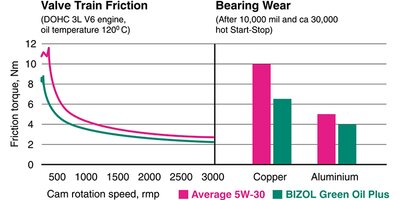MIXING COOLANTS: WHAT TYPES OF ANTIFREEZE CAN BE MIXED
Coolant plays a vital role in a vehicle, serving multiple important functions. Firstly, it efficiently removes heat from the car's power unit, ensuring its optimal performance. Secondly, during cold seasons, the coolant also helps in heating the cabin, providing comfort to the passengers. Thirdly, it acts as an essential anti-oxidizing defense for the entire system, safeguarding critical components from corrosion and damage.
Yet, a frequent inquiry that surfaces is whether it is possible to blend fluids of variant classes and diverse hues. So, can you mix antifreeze? Many individuals who are not well-versed in automotive topics often overlook the significance of coolant color matters.
Let's delve into the implications of blending fluids with diverse hues. Can you mix coolants of various colors? This article aims to address all the related issues and provide clarity on this matter.

What are the types and colors of antifreeze
The types and colors of liquids can vary, and understanding their distinctions is crucial. The classification of antifreeze began with VAG (Volkswagen Audi Gruppe) in the 1990s, leading to a few G-groups to categorize coolants:
-
G11: These liquids are hybrid blends of ethanediol and distilled water, with a minor quantity of additions. These specific fluids are specifically intended for vehicles produced before approximately 1998 and have a lifespan of up to 3 years.
-
G12: These coolants are water-ethylene glycol-based carboxylate liquids with natural adjuncts. Their key feature is their effectiveness in combating corrosion, making them suitable for aluminum motors. The G12 group has a 5-year lifespan without requiring replacement. The original G12 antifreezes were discontinued in 2004 and replaced by "plus" modifications.
-
G12+: liquids in this group form a resistance layer in the areas prone to rust formation and take preventive measures to avoid their appearance. The coolants labeled as G12+ contain agents that restrain rust formation based on carboxylic acids. It is recommended to replace it every 5 years or after covering 200 thousand kilometers of mileage.
-
G12++ (Lobrid): The primary makeup of G12++ includes a constitutional base and mineral restrainers. By blending the benefits of natural and synthetic additions in one container, these liquid actively uphold the motor walls against oxidation. G12++ lobrid coolants offer a prolonged durability of 10 years.
-
G13: The characteristics of G13 coolants enable their application in high-powered forced engines, including sports cars.The interservice replacement period for G13 has been increased to 10 years.
While this systematization is widespread, it may not apply to all brands. Cool liquid can be broadly classified into three main classes: OAT (organic acid technology), IAT (inorganic additive technology), and 'hybrid'.
Previously, cooling liquids were distinguished primarily by their hues, such as orange or green. The orange fluid, known as OAT, is the more current formula, and using it can extend the life of your car. On the other hand, green liquids, referred to as IAT, are created for older automobiles manufactured before the year 2000. They are not as long-lasting and should be changed every 36,000 miles.
It is important to note that today, the chemical makeup of fluid determines its class, rendering the hue less relevant. So, can you mix radiator coolants? While the hue no longer serves as a clue of the liquid class, it is crucial to be cautious when refilling the tank to avoid any compatibility issues.

Does mixing antifreeze matter
Combining antifreeze is a critical consideration, and automotive experts strongly advise against blending a variety of fluids. The compatibility of fluids is determined by their chemical contexture, and while the hue of liquids may vary, it is not indicative of their reconcilability. For instance, red fluid marked G12 can be safely topped up with blue liquid of the same G12 type if needed.
Yet, the real concern arises when antifreeze of variant classes, such as OAT and IAT, are blended together in a cooling system. This leads to disastrous consequences for the vehicle. The system may become blocked, and an irreversible chain of violations in the auto mechanism can occur.
In summary, it is crucial to avoid combining variants types of fluids, even if they have the same color markings. Careful attention should be given when refilling the coolant tank to ensure the correct type is used, preventing potential damage to the vehicle's cooling system.
Is it possible to mix different types of coolants
Is it safe to mix coolants?
Blending variants of cool fluids is not advisable and can be unsafe for your vehicle. Combining variants types of cool liquids is discouraged and can pose risks to your vehicle's well-being. Therefore, it is essential to avoid combining different types of fluids.
Can you mix different color coolants
Similarly, mixing coolants with different hues is also discouraged. While the hue of the liquid may not impact its characteristics, it is not advisable to combine fluids of different hues. This is because you might not know the type of fluid already present in your tank, and adding a different color coolant could lead to compatibility issues.
Can you mix different brands of antifreeze
When it comes to blending different brands of antifreeze, it is generally safe if the fluids have the same chemical ingredients. However, it is crucial to ensure that the coolant you choose meets certain qualities, such as additives with anti-corrosion properties, no foaming, no sediment during extended operation, and stable physical properties throughout the year.
What happens if you mix antifreeze types
What happens if you mix coolants? If coolants have distinct additives or are of different classes, it is strictly prohibited to blend them. Combining incompatible coolants can lead to increased oxidation in the radiator and impairment of the vehicle's cooling system, resulting in potential damage.
To sum up, can you mix two different coolants? Yes, if they have similar chemical contexture, regardless of their color. However, it is crucial to evince caution and ensure compatibility to maintain the optimal capacity of your vehicle's cooling system.

You might also like

Prof. Dr. Boris Zhmud, Head of R&D, BIZOL Germany

Within the realm of automotive care, few substances are as vital as motor oil, in ensuring the seamless operation of a vehicle's propelling device. It serves as the lifeblood of a motor, ensuring that the intricate machinery operates efficiently and without unnecessary friction. The functions of motor lubricant substance extend far beyond just lubrication, encompassing a range of critical tasks that contribute to the longevity and performance of a propelling mechanism. In this article, we’ll delve into the multifaceted functions of motor oil and explore how it plays a pivotal role in maintaining the health of automotive powerhouses.

The modern marvel of an internal combustion motor powers our vehicles, providing the strength and reliability we rely on for daily transportation. However, just like anything else subjected to constant use, motorized units experience wear and tear over time. Component deterioration can significantly impact performance and longevity. In this article, we will delve into the intricacies of engine wear meaning, explore the various causes behind it, provide actionable tips to reduce and prevent it. Furthermore, we will look at how specialized engine oils, such as BIZOL, play a crucial role in safeguarding your engine’s health. Let’s begin by understanding what engine wear is and the factors that contribute to it.

